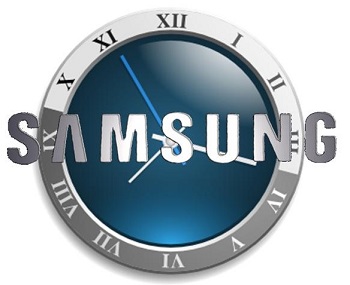This news was made just as the Apple Watch was first launched and as over 3,000 compatible apps flooded iTunes.
At the same time that the wearable technology spotlight had been aimed at the Apple Watch release, Samsung dropped hints and teases about its own possible upcoming smartwatch that may have a round design.
Samsung wasn’t the only company grasping for attention on that day as Google also suggested a possible new Glass release.
Though the Apple Watch smartwatch launch didn’t come with all of the explosive hype of the typical release of gadgets from that device maker, due to the preorder online selling strategy that it implemented, there was a great deal of noise in the wearable technology industry as other companies fought to draw attention to their own upcoming tech creations. As Apple’s faithful shoppers selected the devices that they would like to pick up at their stores, and as over 3,000 wearables friendly apps made it into iTunes, many other announcements were also made.
Samsung, for instance, felt that this would be a great time to tease at the appearance of a new smartwatch.
 The upcoming wearables from Samsung may break with its previous designs and aim for a round screen. This would not be the first round device on the market but it would be the first one from that company and it would still place it in the minority.
The upcoming wearables from Samsung may break with its previous designs and aim for a round screen. This would not be the first round device on the market but it would be the first one from that company and it would still place it in the minority.
Beyond that, the CEO of Luxottica revealed that when it comes to wearable technology news, it didn’t stop with Samsung. Google is also gearing up to start to show off a brand new version of its Glass augmented reality headset. It had already shut down operations on the original version of that device, but it’s now clear that the AR glasses weren’t abandoned, altogether, as hints have been repeatedly dropped over the last while about a new version that will be on its way.
The wearable technology category is starting to heat up in quite a dramatic and increasingly competitive way and while companies had previously appeared to be testing the waters with initial releases of a smartwatch, it now looks as though they are moving beyond the basics. Design and style are becoming an important factor with these wearables.
Deloitte report highlights the potential success that mobile commerce will see this year
Deloitte has released its latest annual Technology, Media & Telecommunications Predictions report, which aims to shed some light on where mobile payments are headed this year. A large number of consumers have become enthralled with the concept of mobile commerce. They are beginning to use their smartphones and tablets to purchase products that they shop for online. This process is considered quite convenient, and new mobile payments services are making it easier for consumers to become involved in mobile commerce.
NFC-enabled mobile payments are growing quickly among consumers
According to the report from Deloitte, 5% of the world’s 650 million NFC-enabled mobile devices will be used at least once a month to make a mobile payment in a physical store. While 5% may not seem overwhelming, this is a significant increase over the number of NFC-enabled devices that were used to make payments in physical stores in 2014. Last year, approximately 0.5% of these devices were used to make an in-store mobile payment.
Forrester report predicts the US mobile payments market will reach $142 billion by 2019
 A similar report from Forrester Research predicts that the mobile commerce market in the United States will reach $142 billion by the end of 2019. This growth will be powered by the growing popularity of mobile commerce services and increased smartphone penetration. Consumers are becoming more comfortable with the concept of mobile payments, especially as secure services are making this sector safer and easier to become involved in.
A similar report from Forrester Research predicts that the mobile commerce market in the United States will reach $142 billion by the end of 2019. This growth will be powered by the growing popularity of mobile commerce services and increased smartphone penetration. Consumers are becoming more comfortable with the concept of mobile payments, especially as secure services are making this sector safer and easier to become involved in.
Large companies bring their customers to the mobile commerce space
Several prominent companies, such as Apple and Samsung, have begun entering into the mobile payments space. These companies have seen a significant rise in the demand for mobile payment support among consumers and are positioning themselves to accommodate this demand effectively. As more large companies enter into the space, the consumers that are loyal to these companies are expected to follow, making use of their mobile commerce platforms and shopping online with their smartphones as well as making payments with their devices in physical stores.
 The upcoming wearables from Samsung may break with its previous designs and aim for a round screen. This would not be the first round device on the market but it would be the first one from that company and it would still place it in the minority.
The upcoming wearables from Samsung may break with its previous designs and aim for a round screen. This would not be the first round device on the market but it would be the first one from that company and it would still place it in the minority.
 A similar report from Forrester Research predicts that the mobile commerce market in the United States will reach $142 billion by the end of 2019. This growth will be powered by the growing popularity of
A similar report from Forrester Research predicts that the mobile commerce market in the United States will reach $142 billion by the end of 2019. This growth will be powered by the growing popularity of 